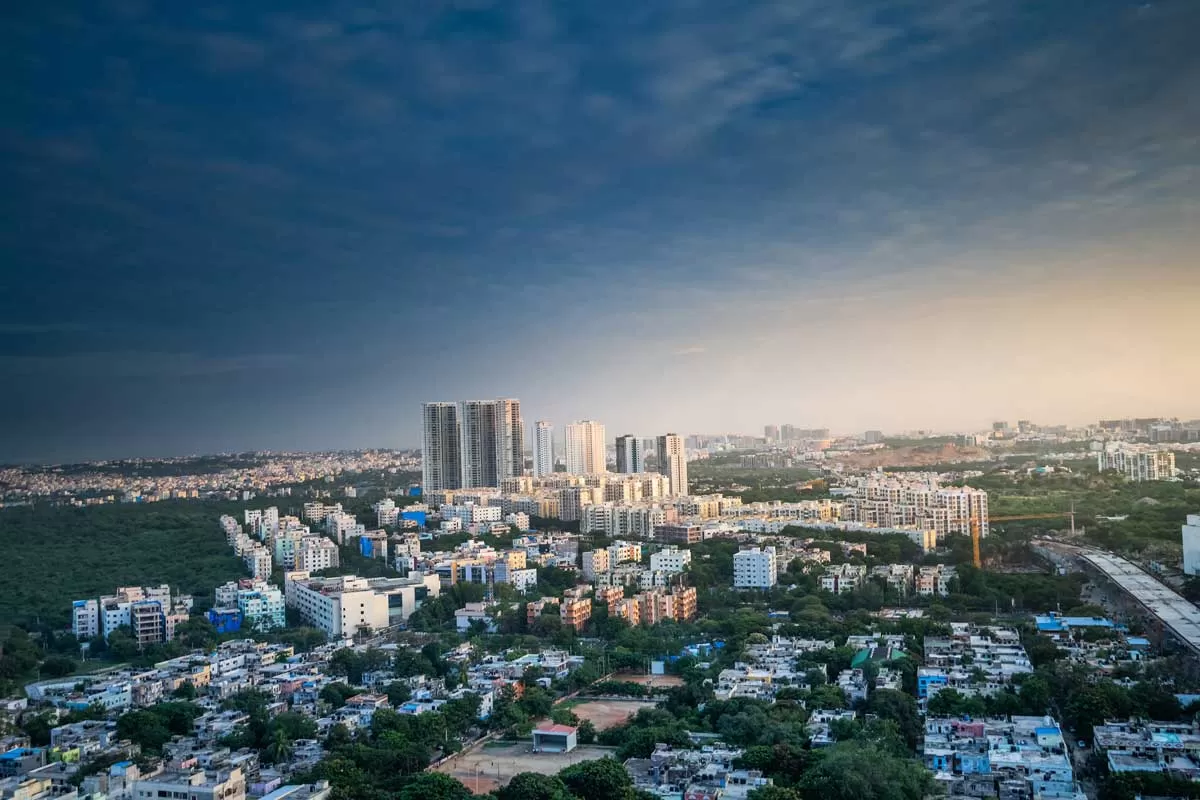Hyderabad’s skyline is transforming at an unprecedented pace but urban planners and citizens alike are raising alarms about the long-term impact of its unchecked vertical expansion. Unlike other major cities in India, Hyderabad does not impose a floor space index (FSI) limit, allowing builders to construct high-rises without restriction. While this has led to rapid urbanisation and a booming real-estate sector, experts warn that the absence of regulatory control could severely strain the city’s infrastructure in coming years.The unintended consequences of no FSIIn 2006, the YS Rajasekhar Reddy-led Congress government removed FSI limits to accelerate urban development. Nearly two decades later, the policy has transformed Hyderabad into a builder’s paradise, where real-estate projects are shaped more by profit potential than by urban planning considerations.“Real-estate developers are maximising land value but infrastructure is struggling to catch up. Without FSI regulations, we are heading towards an urban crisis,” warns Sreekanth Reddy, Managing Director, Cushman & Wakefield, Hyderabad.In most major cities, FSI is capped at an average of 2.5, ensuring controlled vertical growth. In Hyderabad, however, FSI ranges between 9 and 13, making it the only major city in India with unrestricted high-rise construction. While this has boosted real-estate investments, it has also outpaced the development of essential infrastructure – roads, drainage systems, power grids and public transportation.Nilesh Jani, Senior Director, Phoenix Group, raises concerns about the impact of unregulated growth on essential services. “Multiple large offices are being built in West Hyderabad. But what about schools? What about hospitals? Right now, schools are moving farther away because landowners want their large share. If we don’t fix these zoning issues, a 15-minute city will be impossible,” he says.The imbalance is evident in Hyderabad’s IT corridor, where office space is multiplying but supporting amenities—such as retail, schools, and hospitals—are not keeping pace. The lack of proper zoning regulations means that while real estate flourishes, residents face increasing congestion, water shortages and an overstretched civic infrastructure.Nanda Kishore, Managing Director, Ramky Estates, emphasises upon the importance of long-term city planning and government intervention to correct this imbalance. “If we want to create a truly liveable city, zoning must be enforced strictly,” he points out. “The government needs to step in and ensure that commercial, residential and social infrastructure are developed in parallel. Otherwise, the urban chaos we are witnessing will only worsen.”What lies ahead?Hyderabad’s no-FSI policy, once seen as a growth catalyst, is now raising serious concerns about long-term sustainability. Without proper urban planning, the city risks infrastructure collapse, rising congestion and declining quality of life.Experts agree that the government must step in to regulate growth, suggesting location-based FSI restrictions, better infrastructure investments and stricter zoning policies as potential solutions.“The paradox is clear – on one hand, we talk about car-free cities, but on the other, our bylaws still mandate 60 per cent parking in commercial buildings. Policies must align with infrastructure goals,” emphasises Reddy.Kishore, echoing the need for policy alignment, states, “Without structured policies and government incentives for planned development, we are setting ourselves up for long-term infrastructure failures. The time for action is now.”Hyderabad’s vertical boom is at a crossroads. Will it continue unchecked, leading to urban chaos or will policymakers intervene before it’s too late? The answer will determine whether the city’s meteoric rise leads to prosperity – or collapse.
Design vs. Vastu: The struggle for architectural creativity
While Hyderabad's FSI-free policy has allowed more ambitious real-estate projects, architects struggle to bring creativity into designs owing to another major constraint: Vastu compliance.
Ar. P Ramakrishna Shenoy, Principal Architect, Arka.de Sign Studio, highlights this challenge, saying, “It’s very easy to be an architect in Hyderabad because the design is already given to you. Vastu dictates the layout and bylaws dictate the shape.”
In Hyderabad, developers strictly adhere to Vastu Shastra, as buyers prioritise traditional layouts over modern design innovations. As a result, architects find themselves working with preset templates:
The kitchen must be in the southeast
The master bedroom must be in the southwest
Even bathroom placements and bed orientations are dictated by Vastu.
This rigid adherence leaves little room for creativity. Even internationally renowned architects working on Hyderabad projects must comply with these norms, resulting in repetitive, predictable urban landscapes.
Ar. Rajeev Kumar Sharma, Managing Director, Designhaaus, agrees that Vastu and outdated bylaws limit architectural innovation. “Vastu compliance is a non-negotiable for developers but it shouldn’t come at the cost of functionality and efficiency,” he says. “The challenge is to find a balance where we can incorporate design excellence while still meeting market expectation
“Homebuyers consider multiple factors and architecture is just one of them. Additionally, in cities like Hyderabad, Vastu compliance significantly restricts architectural creativity,” adds Rakesh Reddy, Director, Aparna Constructions & Estates. While the absence of FSI could have encouraged bold, innovative architecture, the constraints imposed by Vastu and outdated bylaws continue to limit what architects can achieve.




















